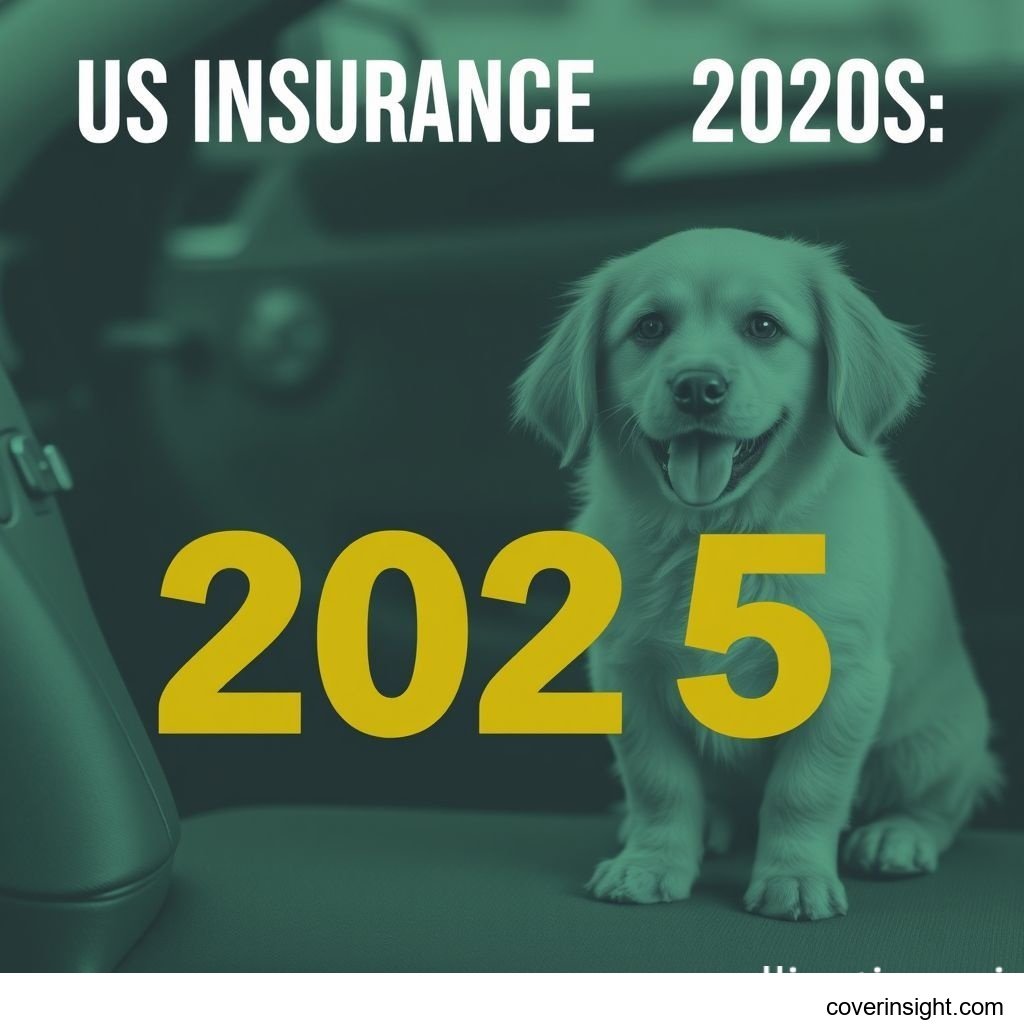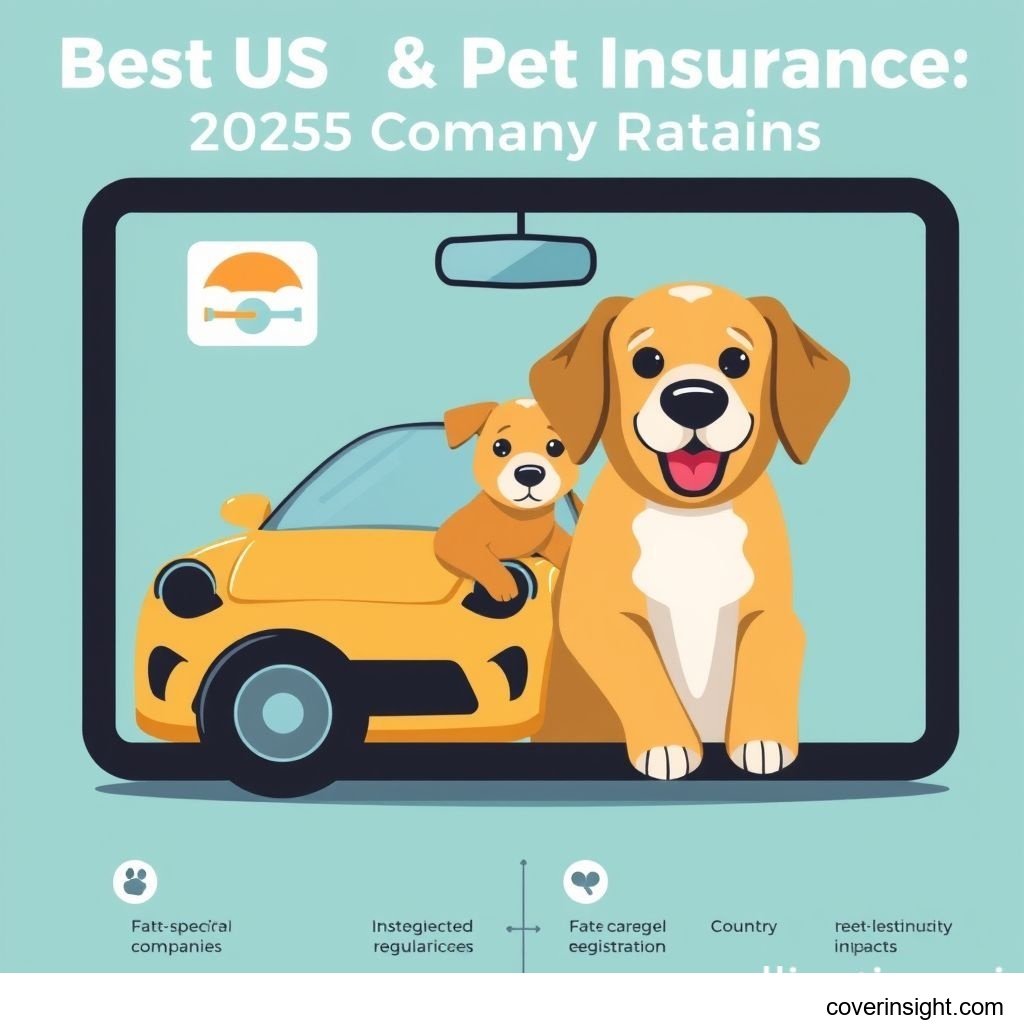Introduction
Navigating the landscape of pet insurance in the US for 2025 can be complex, yet it's an essential step for responsible pet ownership. As veterinary costs continue to rise, securing adequate coverage becomes increasingly vital. This comprehensive guide offers detailed pet insurance comparisons, helping you understand various plans, identify top providers, and make informed decisions to protect your beloved companions. We'll delve into what to look for, how to compare options effectively, and key factors influencing your choices.
Understanding Pet Insurance Comparisons: Core Coverage
When undertaking pet insurance comparisons, a clear understanding of what policies generally include and exclude is fundamental. Not all plans are created equal, and discerning the nuances can save you considerable expense and heartache in the long run. Different insurers offer varying levels of protection, from accident-only to comprehensive wellness plans.
Comprehensive Coverage Details
Most pet insurance policies are designed to cover unexpected accidents and illnesses. This typically includes a wide range of veterinary services. For instance, diagnostic tests like X-rays, blood work, and ultrasounds are often covered. Treatment options such as surgeries, hospitalization, prescription medications, and emergency care also fall under common policy inclusions. Many comprehensive plans extend to cover chronic conditions like diabetes or arthritis, provided the condition isn't pre-existing before coverage began. Some top-tier plans even offer wellness add-ons, which can reimburse for routine veterinary visits, vaccinations, dental cleanings, and flea/tick prevention. Understanding these inclusions is crucial for effective pet insurance comparisons.
Common inclusions:
-
Accidents: Fractures, cuts, bites, poisonings.
-
Illnesses: Cancer, infections, digestive issues, allergies.
-
Emergency care and hospitalization.
-
Diagnostic tests (lab work, imaging).
-
Prescription medications.
-
Specialist care (dermatologists, cardiologists).
-
Behavioral therapies.
While these are common, always verify the specifics of each policy you consider.
Common Exclusions
Equally important during pet insurance comparisons is identifying what policies typically do not cover. Pre-existing conditions are almost universally excluded. A pre-existing condition is any illness or injury that showed symptoms or was diagnosed before the policy effective date or during its waiting period. This is a critical point of difference among insurers. Cosmetic procedures, breeding costs, and sometimes even specific hereditary or congenital conditions (depending on the breed and insurer) might also be excluded. Elective procedures like tail docking or ear cropping are generally not covered. Some policies might also have age limits or specific breed exclusions, so always read the fine print.
Typical exclusions often include:
-
Pre-existing conditions (most common exclusion).
-
Elective or cosmetic procedures.
-
Breeding and pregnancy-related costs.
-
Experimental treatments.
-
Grooming and boarding fees.
-
Specific hereditary or congenital conditions (varies by plan).
-
Food and dietary supplements not prescribed for a covered condition.
Image Alt Text: A veterinarian examining a happy dog, illustrating comprehensive pet care covered by insurance.
Cost Analysis for Pet Insurance Comparisons
The cost of pet insurance is a significant factor in any decision-making process. Premiums can vary widely, influenced by numerous elements. Understanding these variables and exploring strategies to reduce costs are key steps in effective pet insurance comparisons.
Factors Influencing Premiums and Saving Strategies
Several factors directly impact your pet insurance premiums. The pet's species (dog vs. cat), breed, age, and location are primary determinants. Larger dog breeds, for example, often have higher premiums due to a predisposition to certain health issues and higher treatment costs. Older pets generally cost more to insure as they are more prone to illnesses. Your chosen deductible, reimbursement level, and annual limit also play a crucial role. A higher deductible will typically result in lower monthly premiums, but you'll pay more out-of-pocket before your coverage kicks in. Conversely, a lower deductible means higher premiums.
Strategies for saving money include:
- Start Early: Insuring your pet when they are young and healthy can lock in lower rates and avoid pre-existing condition exclusions.
- Choose a Higher Deductible: If you can afford more out-of-pocket, a higher deductible reduces your monthly payment.
- Opt for Lower Reimbursement: Selecting an 80% instead of a 90% reimbursement rate can slightly lower premiums.
- Multi-Pet Discounts: Many insurers offer discounts for enrolling multiple pets.
- Annual Payments: Paying your premium annually instead of monthly can sometimes result in a small discount.
- Bundle Policies: Some providers offer discounts if you bundle your pet insurance with other policies like home or auto insurance.
- Review Plans Annually: Revisit your pet insurance comparisons yearly to ensure your plan still meets your needs and budget.
Navigating Group vs Individual Pet Insurance Plans
The structure of pet insurance can also influence your choice and cost. When conducting pet insurance comparisons, it’s important to understand the distinctions between group and individual coverage. Each type offers unique advantages and considerations for pet owners.
Exploring Plan Structures: Group vs Individual
Group pet insurance plans are typically offered through employers, associations, or other organizations. These plans can often provide more affordable rates due to the collective bargaining power of the group. Employers might even subsidize a portion of the premium, making it a highly attractive option. The enrollment process can be simpler, and sometimes, pre-existing condition clauses might be more lenient, or waiting periods shorter, though this varies significantly by plan. For employees, this benefit integrates seamlessly with other workplace benefits.
On the other hand, individual pet insurance plans are purchased directly by the pet owner from an insurance company or through a broker. This offers maximum flexibility and customization. You can choose the exact coverage, deductible, reimbursement percentage, and annual limits that best suit your pet’s needs and your financial situation. While individual plans may sometimes appear more expensive on a standalone basis, they provide tailored solutions that group plans might not. This flexibility is crucial for pet owners with specific needs or those not affiliated with an organization offering group benefits. When evaluating pet insurance comparisons, consider whether a group option is available to you and weigh its benefits against the customization of an individual plan.
Choosing Your Path: Insurance Broker vs Direct
When you're ready to purchase a policy after thorough pet insurance comparisons, you'll face a decision: work with an insurance broker or buy directly from an insurer. Both paths have their merits and can lead to securing the best coverage for your pet.
Selecting Your Purchase Method: Broker or Direct
Engaging with an insurance broker vs direct purchase involves different benefits. An insurance broker acts as an intermediary, working on your behalf to find suitable policies from multiple insurance companies. They can offer objective advice, explain complex policy terms, and help you compare various options side-by-side. Brokers often have access to a wider range of products, including some that might not be advertised directly to the public. They can be particularly helpful if you have unique needs or want to simplify the comparison process, providing personalized recommendations based on their expertise. Their service is usually compensated by the insurer, not directly by you, making it a valuable, no-cost resource for pet insurance comparisons.
Buying direct from an insurer means you go straight to the insurance company, usually via their website or a dedicated sales line. This method offers a streamlined process, often providing instant quotes and online enrollment. Direct purchases can sometimes eliminate certain administrative fees associated with brokers, potentially leading to slightly lower premiums in some cases. You also have direct communication with the insurer’s customer service for any questions or claims. This approach is ideal for those who prefer to research and manage their insurance decisions independently. Both methods are valid for obtaining coverage, and your choice depends on your preference for guidance versus direct control.
Image Alt Text: A person comparing various pet insurance policy details on a laptop, highlighting the ease of online pet insurance comparisons.
Strategic Pet Insurance Comparisons
Making the right choice among the myriad of available pet insurance plans requires a strategic approach. Beyond just premiums, several key elements warrant close attention during your pet insurance comparisons.
Key Considerations for Informed Decisions
When conducting strategic pet insurance comparisons, look beyond the initial premium quote. Consider the insurer's reputation and financial stability; resources like the National Association of Insurance Commissioners can provide valuable insights into a company's standing and complaint history. Evaluate the annual reimbursement limit: some plans cap how much they will pay out per year, which could be critical in cases of serious illness or injury. The deductible, which is the amount you pay out-of-pocket before coverage begins, is another significant factor. Opt for a deductible that aligns with your financial comfort level.
Reimbursement percentage is also vital; most plans offer 70%, 80%, or 90% back on eligible veterinary bills. A higher percentage means less out-of-pocket expense after meeting your deductible. Furthermore, investigate waiting periods. These are the periods between policy purchase and when coverage for certain conditions becomes active. They vary by insurer and type of coverage (accidents, illnesses, orthopedic conditions). Some providers may have shorter waiting periods or waive them under certain circumstances. Finally, check for add-on options like wellness plans, which cover routine care, to complete your pet insurance comparisons.
Factors to consider:
-
Company Reputation and Financial Stability: Look for positive reviews and strong ratings.
-
Annual Reimbursement Limit: Ensure it's high enough for potential catastrophic events.
-
Deductible Amount: Balance lower premiums with your ability to pay upfront.
-
Reimbursement Percentage: Choose a percentage that minimizes your out-of-pocket costs.
-
Waiting Periods: Understand when coverage truly begins for different conditions.
-
Coverage for Hereditary/Congenital Conditions: Important for certain breeds.
-
Customer Service and Claims Process: Look for efficiency and ease.
Utilizing online tools and resources is invaluable for this process. Many websites allow you to input your pet's information and receive quotes from multiple providers simultaneously, streamlining your pet insurance comparisons. Remember that while Healthcare.gov focuses on human health, the principles of comparison and understanding policy details are similar across insurance types. For state-specific regulations, the State Insurance Departments can provide further guidance. For more general information on insurance products, you might also find value in consulting Insurance Resources Global. For resources specific to the US, consider exploring our US Insurance Home.
Frequently Asked Questions about Pet Insurance Comparisons
Many common questions arise when pet owners begin their journey into pet insurance comparisons. Here, we address some of the most pressing inquiries to help clarify the process.
How Much Does Pet Insurance Comparisons Cost?
The cost of pet insurance is highly variable, making direct pet insurance comparisons essential. On average, you might expect to pay anywhere from $30-$70 per month for a dog and $15-$40 for a cat, but these are broad estimates. Factors like your pet's breed, age, location, and the specific coverage details (deductible, reimbursement percentage, annual limit) all significantly influence the final premium. Comprehensive plans with high reimbursement rates and low deductibles will naturally cost more than accident-only policies. Getting multiple quotes is the best way to determine the specific cost for your situation.
What Affects Pet Insurance Premiums?
Several key variables affect pet insurance premiums. Age is a major factor; older pets typically cost more to insure due to their increased likelihood of developing age-related illnesses. Breed also plays a significant role, as certain breeds are predisposed to specific genetic conditions, leading to higher premiums. Your geographical location can influence costs due to variations in veterinary fees. Furthermore, the plan's components—your chosen deductible, the reimbursement percentage, and the annual or per-incident coverage limit—directly impact how much you pay monthly. Higher deductibles and lower reimbursement percentages generally result in lower premiums.
Is Pet Insurance Mandatory?
No, pet insurance is not mandatory in the United States. Unlike auto insurance in most states or health insurance under certain mandates, there is no legal requirement for pet owners to carry pet insurance. However, while not mandated, it is highly recommended by many veterinarians and financial advisors. The rising costs of veterinary care, especially for emergency situations or chronic conditions, can create significant financial strain. Pet insurance acts as a financial safety net, allowing pet owners to make healthcare decisions based on their pet's needs rather than their ability to pay. Many people decide to get pet insurance after performing thorough pet insurance comparisons and realizing the potential savings.
How to Choose the Best Pet Insurance Plan?
Choosing the "best" pet insurance plan involves a personalized approach based on your pet's needs, your budget, and your risk tolerance. Start by assessing your pet's health history, breed-specific risks, and age. Next, define your budget for monthly premiums and consider how much you're willing to pay out-of-pocket via deductibles and co-pays. Then, begin your pet insurance comparisons by obtaining quotes from several reputable providers. Pay close attention to:
-
Coverage details: What's included (accidents, illnesses, wellness) and what's excluded (pre-existing conditions).
-
Reimbursement percentage and annual limits.
-
Waiting periods for different conditions.
-
Customer service reputation and claims process efficiency.
-
Read customer reviews and independent ratings.
The best plan is one that offers comprehensive coverage for your pet's potential needs at a price you can comfortably afford, minimizing financial stress during unexpected veterinary emergencies.
What Are the Consequences of No Pet Insurance Coverage?
Opting for no pet insurance coverage carries significant financial risks. Without a policy, you are solely responsible for 100% of your pet's veterinary bills. This can lead to difficult choices if your pet faces a serious illness or accident requiring expensive diagnostics, surgery, or ongoing treatment. Many pet owners find themselves facing bills of thousands of dollars, which can lead to:
-
Financial Strain: Unexpected large expenses can deplete savings or force debt.
-
Delayed or Denied Treatment: In extreme cases, owners might be forced to delay or forgo necessary treatments due to cost, impacting their pet's health and well-being.
-
Emotional Distress: The inability to provide optimal care due to financial constraints can cause immense emotional hardship.
While a pet emergency fund is a good idea, insurance offers a buffer against truly catastrophic costs that an emergency fund might not cover. This is why thorough pet insurance comparisons are often seen as a wise investment in your pet's future.








Comments